Fall 2024 viewing round-up, part one
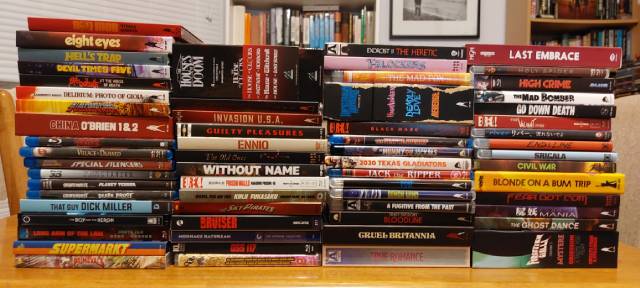
As always, I’ve been watching far more movies than I’ve had time to write about them. Hopefully I’ll be able to improve on this discrepancy soon as I’m retiring from my day job at the end of December and will have more time for writing. But for now, the best I can do to “catch up” is to jot down a few brief comments about some of these missed titles.
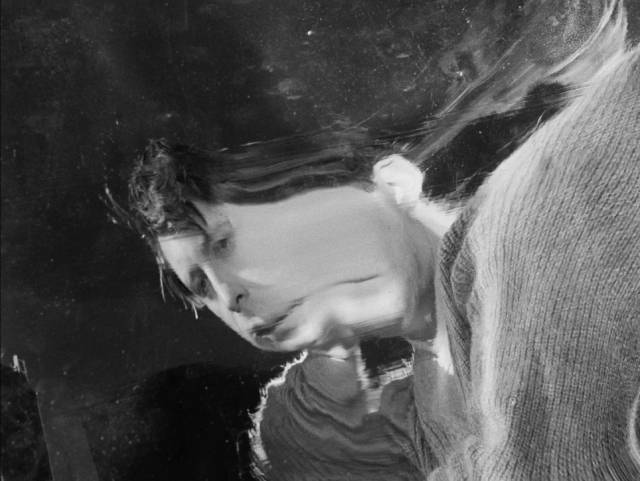
Blonde on a Bum Trip (Raf Mauro, 1968)
Raf Mauro’s Blonde on a Bum Trip (1968) is, like Christina Hornisher’s Hollywood 90028 (1973), a resurrected slice of exploitation from a by-gone era; but, unlike Hornisher’s film, it has little artistic ambition. A mix of drug-warning melodrama and roughie, it features sex, drugs and rock-and-roll, with a little nudity, some hallucinatory low-budget cinematography and a terrific soundtrack. In nicely-shot black-and-white, it tells the story of a naive small-town girl (Alexis Wessell) who gets into college on a scholarship and is talked into cooking up LSD in the school lab by her rich dorm roommates to supply their friends. Told in flashback from the hospital room where the drugged-out girl is strapped down in the throes of that titular bum trip, we see her descent into decadence, which eventually leads to murder at a party where everyone is high. The plot is rudimentary, but the location shooting provides a fascinating time capsule of New York in the late ’60s, particularly some real, somewhat grungy, music clubs where actual performances by The Bit A’Sweet, The E-Types and the Vagrants add a dose of authenticity. For the climactic party, cinematographer Leon Gast (future director of the award-winning documentary When We Were Kings [1996]) uses flexible Mylar sheets to produce druggy, distorted imagery, which deliberately obscures what actually happens when someone stabs another party-goer to death. The Blu-ray from Distribpix looks far better than you might expect, with a 4K transfer from the original camera negative and a mono track which cleanly supports the post-dubbed dialogue and, more importantly, the live musical performances. There are two commentaries – from director Mauro and writer-producer Ed Adlum (Invasion of the Blood Farmers [1972]), and writer-producer Jack Bravman – which go into a lot of detail about the exploitation business and the involvement of the bands featured in the movie. There are also three LSD scare movies from the ’60s which offer material similar to Blonde, though of course without the sex.
*
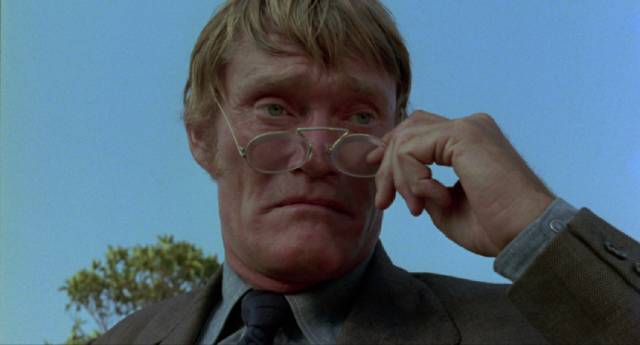
The Mad Bomber (Bert I. Gordon, 1973)
The Mad Bomber (1973) is exploitation of a more mainstream kind, and particularly interesting because it was co-written and directed by none other than Bert I. Gordon. I’d never come across it before Severin recently released a 4K restoration from the internegative (though it was apparently previously available on DVD and Blu-ray from Code Red) and, given that I mostly know about Gordon from his cheap sci-fi/horror movies about giant people or animals on the rampage, it’s a bit of a revelation. Someone is planting bombs around Los Angeles and cop Geronimo Minneli (Vince Edwards) quickly realizes that the culprit must have been seen by a serial rapist; so, despite opposition from his boss, he sets out to track down the rapist as a way to find the bomber. Gordon’s location cinematography adds a note of gritty realism and the story is given some weight by the cast, which includes Chuck Connors as the bomber and Neville Brand in his best sleazy-creep mode as the rapist. Away from his bargain-basement special effects, Gordon proves to be an efficient manager of the movie’s interconnecting plot threads, adding some touches of humour (the bomber’s prissy confrontations with a litterbug and a rude driver are highlights) and keeping things moving at a rapid pace. The disk has a commentary from Kier-La Janisse which includes a discussion with a retired bomb squad detective, plus audio interviews with Gordon (in conversation with David Del Valle) and the director’s daughter. There are also a couple of featurettes – an interview with actress Cynthia MacAdams and a look at the locations. In addition, there’s a television cut which, naturally, eliminates the nudity from scenes in a strip club and also the rapist’s unsavoury home-made porn involving his wife.
*
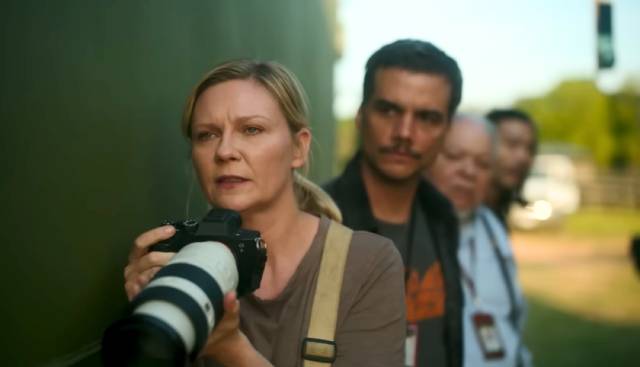
Civil War (Alex Garland, 2024)
I’ve liked some of the movies Alex Garland wrote for Danny Boyle, and I really liked the first two movies Garland directed himself, Ex Machina (2014) and Annihilation (2018), but haven’t seen Men (2022), which seemed to get generally negative reviews. The reviews for Civil War (2024) have been decidedly mixed, so I was cautiously optimistic when I sat down to watch it … and was quickly drawn in; it’s an impressive achievement which manages to avoid knee-jerk responses to a situation which, in the real world, now seems to be nothing but knee jerks. Set in a near-future U.S. which has collapsed into the titular self-destructive conflict, it focuses on a group of journalists traversing a landscape fraught with violence between factions which – and this is one of the film’s main points – are defined only by their mutual hatred. In avoiding interpretation and concentrating on only “reporting the story”, the four main characters attempt to remain neutral, while finding themselves in danger from all sides. In this, the film resembles other movies which have dealt with western journalists reporting on other countries being torn apart by internal conflict – Roger Spottiswoode’s Under Fire (1983), Peter Weir’s The Year of Living Dangerously (1982), Oliver Stone’s Salvador (1986) – but with the added frisson that here the collapse is occurring in the self-proclaimed bastion of freedom and democracy. A road movie in which each stage of the journey brings new sources of tension, it crystallizes the ugly divisions which have come to define American society since the rise of Trump. Its refusal to declare an allegiance to one side or the other seems to have bothered some people, but Garland’s strategy ultimately points to the depressing fact that division and violence have become an end in themselves, each side digging in and refusing to acknowledge any shared humanity with their “enemies”; this attitude has little to do with policy disagreements and everything to do with a deeply entrenched tribalism. Superbly crafted, with an excellent cast (Kirsten Dunst, Cailee Spaeny, Stephen McKinley Henderson and Wagner Moura as the journalists, and Jesse Plemons in the most chilling sequence as a soldier whose hatred and othering have reached a genocidal level), it manages to capture the tenor of the times with chilling authenticity. Not surprisingly, the image on the A24/Elevation Pictures disk is excellent; included is a lengthy making-of and a cast-and-crew Q&A.
NOTE: This morning, after this post went live, I woke to the news that the U.S. electorate had overwhelmingly voted for a deranged criminal lunatic driven by hatred and an ambition to become a fascist dictator. For those of us outside the States, this isn’t simply distressing because it signals that the American people have enthusiastically driven the richest and most powerful nation in the world into a seemingly bottomless sinkhole of political and social chaos – it also makes the rest of the world a more dangerous place. Suddenly Garland’s movie seems more terrifyingly plausible. How soon before Trump sets his faithful right-wing militias on those he deems “internal enemies” while simultaneously enabling countries like Israel and Russia to continue and expand their military actions against their neighbours?
*
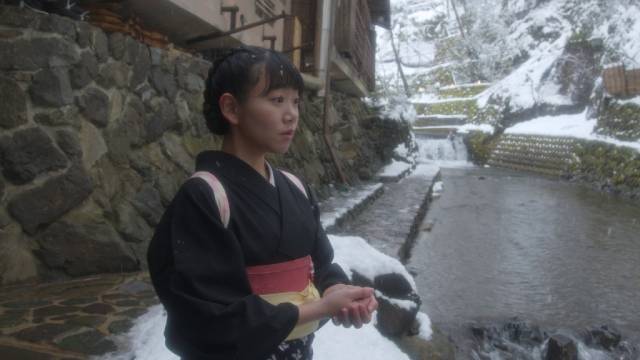
River (Junta Yamaguchi, 2023)
I was a little wary of watching Junta Yamaguchi’s River (2023), because it appeared that he was re-working the central gimmick from his first feature, the wonderfully inventive Beyond the Infinite Two Minutes (2020), which might indicate that that movie had exhausted his potential. Working once again from a script by Makoto Ueda, River is another comedy about a group of people who find themselves trapped in a very short time loop, gradually figuring out through multiple iterations what’s happening and how to fix it. The setting is different, the cast of characters larger, and – most importantly – the emotional resonances deeper. Set in a small country inn and spa, not only are the same few minutes repeated (with increasingly elaborate variations), the picturesque setting rapidly cycles through the seasons, a few minutes of summer followed by the depths of winter or burgeoning spring or the melancholy colours of fall. While Infinite Two Minutes was largely about the mechanics of the situation, River manages to explore the characters and their emotions as they reveal themselves to one another in these brief slices of time. Rather than merely repeating a gimmick, River is a richer exploration of the ways in which people connect with one another as they become more aware of the transience of existence under the pressure of the inexorable passage of time. The Graveface Blu-ray has an excellent image (so enticing you’ll want to visit the inn), accompanied by a commentary, a one-hour making-of, an interview with the director, and a visual essay about the film’s use of time.
*
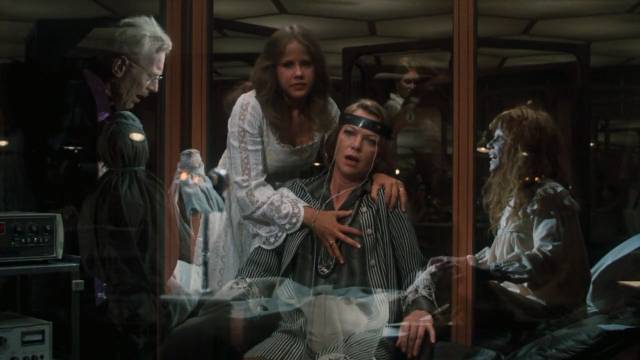
Exorcist II: The Heretic (John Boorman, 1977)
John Boorman has made a lot of interesting choices in his career, but perhaps never with as much hubris as deciding to direct a sequel to one of the biggest, most successful mainstream horror movies ever made … and taking a completely different direction from the original. Diverging so drastically from William Friedkin’s The Exorcist (1973) pretty much guaranteed audience and critical confusion, disappointment, and even hostility. Boorman himself was openly critical of Friedkin’s movie, which he viewed as an unpleasant marathon of child abuse. Working from a script by William Goodhart, which Boorman reworked with his long-time collaborator Rospo Pallenberg, Boorman turned away from horror towards metaphysical fantasy, aided enormously by production designer Richard Macdonald and cinematographer William Fraker; shot mainly on studio sets which recreated the Ethiopian desert, ancient temples carved into high cliffs, and the Georgetown street and house where the original film was set, Exorcist II has a strange, dreamlike look, shifted slightly sideways from the original movie’s dogged realism. The religious elements are set against (and complemented by) a fanciful sci-fi concept which ties the conflict between good and evil to evolution and the idea that the universe is nudging existence towards a transcendently positive higher state – with Regan (Linda Blair) the next stage in human development. The Church and its rituals are sidelined because this conflict both predates and supersedes Christianity. The film constantly risks plunging into absurdity (as does the original film, and in fact all possession movies), but the imagery and Boorman’s effort to bend the material towards something uplifting has always charmed me – in fact, back in 1977, when it was being trashed by critics, I actually wrote him a fan letter about it and received an appreciative reply (which may still be buried somewhere in a box up in the attic). Watching it again on Arrow’s special edition Blu-ray, I felt the same affection – for the longer premiere version, that is; the shorter international cut is a clumsy mess apparently representing someone’s idea of how to transform it into something closer to a more conventional sequel. The two-disk set, with each version on its own disk, includes several new and archival commentaries on both versions, an archival interview with Blair, and a visual essay.
*
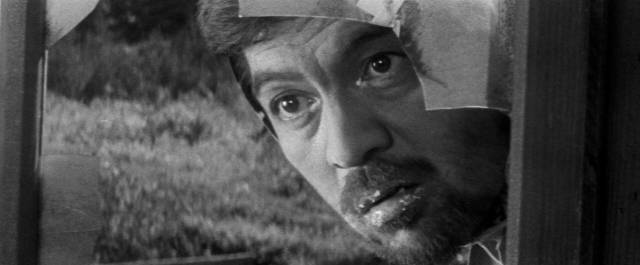
A Fugitive From the Past/The Mad Fox (Tomu Uchida, 1965/1962)
I saw and admired Tomu Uchida’s A Bloody Spear on Mount Fuji (1955) a few years back, so I didn’t hesitate to pick up Arrow’s release of what appears to be his crowning achievement, A Fugitive from the Past (1965). Adapted from a 1700-page novel by Tsutomu Minakami, its elliptical, decade-spanning narrative no doubt carries an enormous number of details which would be meaningful to a Japanese viewer, but many of which I know I missed (the disk extras and booklet clarify some of these), but the storytelling is compelling and, even at just over three hours, the film doesn’t feel long. Beginning a few years after the war, it tells several parallel stories – a man joins a pair of escaped convicts who have just robbed and killed a shopkeeper, setting fire to the premises; as they make their escape, the fire spreads through the town, a devastating echo of the recent war. Meanwhile a ferry sinks in a storm and, while efforts are made to rescue survivors and recover bodies, the three steal a small boat and set out for the mainland; on the way, the convicts attempt to kill the man, but he overpowers them and escapes with the money. Finding brief refuge with a prostitute, he assuages his guilt by leaving her a large bundle of money, enough for her to buy her freedom and head for the big city. Meanwhile, a policeman becomes obsessed with the two unidentified dead men among the ferry victims. Years pass, and the prostitute sees a picture in the paper of a successful, wealthy businessman and recognizes her benefactor. Wanting to thank him, she visits his home, but he mistakenly thinks that she’s trying to blackmail him … tragedy ensues, rooted in misunderstandings and personal obsessions, drawing the characters together in a downbeat, fatalistic conclusion rooted in the lingering traces of the social and personal damage left by the war and the troubled attempt to build something new in the ruins.
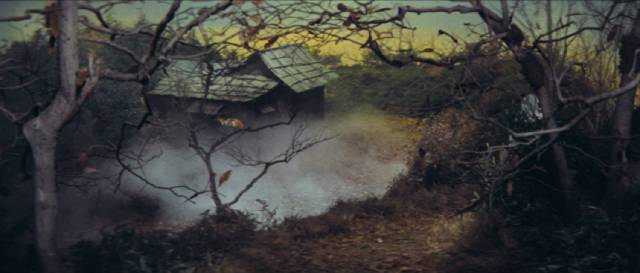
I also watched Uchida’s The Mad Fox (1962), so startlingly different from Bloody Spear and Fugitive that it’s hard to believe it came from the same director. Shot in richly stylized colour and set in a fantastical medieval Japan, it draws on the artificial techniques of Bunraku and Kabuki to tell the story of an acolyte of the court astrologer who is driven mad after his master’s wife and his fellow acolyte murder the astrologer and frame him for theft and murder in order to gain power themselves. Wandering without memory, he’s taken in by fox spirits, living an illusory family life married to a spirit he believes to be the murdered woman he loved, with whom he has a child. The illusion is ultimately shattered when the past catches up with him. Although the lush, colourful visuals are enticing, I confess I was a little disappointed after the immersive drama of A Fugitive from the Past.
Both Arrow disks feature strong transfers. Fugitive gets an introduction from Jasper Sharp and scene-specific commentaries from multiple experts on Japanese cinema, while Fox has a commentary from Sharp. Booklet essays help to provide context and interpretation for both films.
*
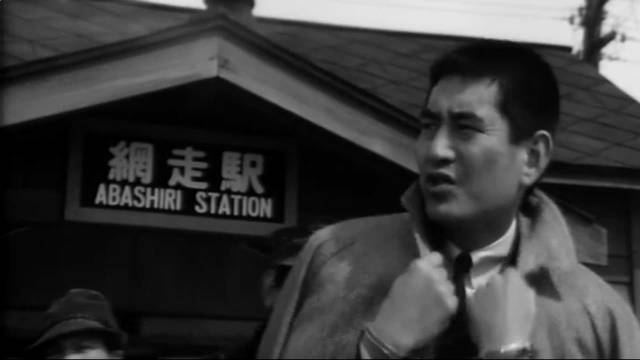
Prison Walls: Abashiri Prison I-III (Teruo Ishii, 1965)
Until now, I’ve mostly known Teruo Ishii through his stylized and fetishistic period films from the late-’60s and ’70s – Shogun’s Joy of Torture (1968), Orgies of Edo, Inferno of Torture, Horrors of Malformed Men (all 1969), Blind Woman’s Curse (1970) – and The Executioner and its sequel (both 1974), although by the time he embarked on this phase of his career he had been churning out B-movies (more than fifty) in multiple genres for more than a decade. My first taste of this earlier period comes from a three-movie, two-disk set from Masters of Cinema which brings together the first three Abashiri Prison features – Ishii directed the first ten episodes in three years, before he got fed up and changed direction with the more familiar sex-and-violence period films; other directors added eight more movies in the following five years.
Abashiri was a notorious real prison in remote Hokkaido, situated in a bleak, cold region where convicts lived in harsh conditions. In the first film, a yakuza named Shinichi Tachibana (Ken Takakura) intends to serve his time quietly, but while being transported to a work site shackled to a tough-guy who jumps from the truck dragging him along, he finds himself on the run across a winter wasteland with an angry guard in pursuit. Shot in gruelling conditions, the film is taut and suspenseful – Tachibana is a decent guy viewed as vermin by those pursuing him, who would be happy to kill him. While it hits most of the prison movie cliches, and in its second half has echoes of Stanley Kramer’s The Defiant Ones (1958), Ishii keeps it fresh with a gritty sense of realism.
In the second film, Another Abashiri Prison Story (1965), Tachibana has finished his sentence and is back in the world. Rushed out to cash in on the first film’s success, this one is much more of a pulp crime movie, in which he and his old cell-mate get mixed up with a gang of thieves who have lost the loot from a jewel heist. Then in the third film, Abashiri Prison: Saga of Homesickness (1965), he returns home and, while reconnecting with his past, becomes sentimentally attached to a young girl living on the streets (a young actress in blackface, which adds an inadvertently uncomfortable note). There’s a feeling by this point that things are being made up as they go along, with the fleshed-out backstory not really tying in to what we learned of the character in the first film … and apparently the connections between episodes would grow even more tenuous as the series progressed. But each movie is effective on its own terms, with Ishii proving to be an efficient journeyman, giving each story pace and atmosphere. I probably liked the first film best because it’s in widescreen black-and-white, while the two sequels are both in colour – but all three look fine.
Each film gets a commentary and there are interviews with Jasper Sharp, Mark Schilling and Tony Rayns.
*
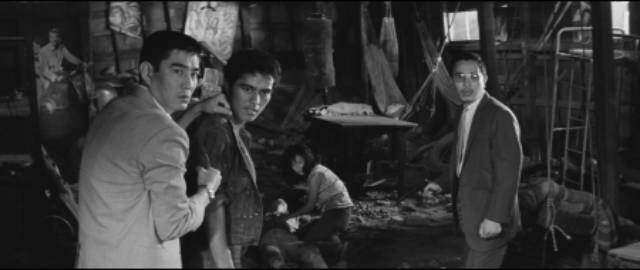
Wolves, Pigs and Men/Violent Panic: The Big Crash (Kinji Fukasaku, 1964/1976)
Although Kinji Fukasaku is one of my favourite directors, I’ve still only seen about half of his films, so it’s always nice to come across ones which are new to me – which is the case with Film Movement’s recent two-disk Furious Fukasaku Blu-ray set. Both films add interesting insight into Fukasaku’s body of work. Wolves, Pigs and Men (1964), his tenth feature in four years, points towards his revisionist approach to the yakuza movie which would begin to transform the genre five years later with Japan Organized Crime Boss (1969) and, more particularly, the Battles Without Honour and Humanity series (1973-74). Eschewing the still common romantic view of gangsters, Wolves focuses on the ways in which poverty drives men to crime and betrayal, with three brothers turning against each other in desperation. The eldest is part of a yakuza “family”, the middle one just out of prison, and the youngest an embittered member of a petty crime gang who hates his brothers for having left him behind in the slums to look after their aging mother. When the middle brother returns from prison, he persuades the younger to help him steal money and drugs from the elder’s crime family. Though the robbery is successful, the younger brother hides the loot, provoking a violent response from the middle brother as the elder is forced by his boss to track down his siblings and recover the stolen money and drugs. The family are violently torn apart by mutual distrust and a lack of control over their own fates.
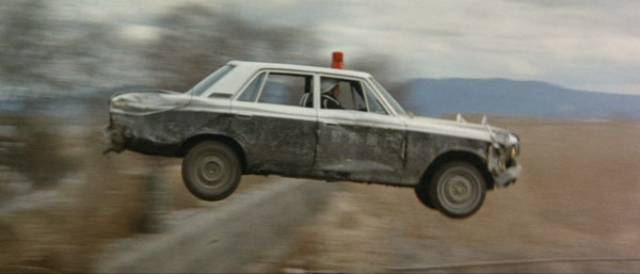
Made a decade later, after Fukasaku redefined the crime genre, Violent Panic: The Big Crash (1976) seems like an unexpected diversion, an action movie packed with car chases and road mayhem influenced by popular American and Italian movies of the period. A couple of friends commit a series of robberies, gathering money so they can escape to Brazil, but in their latest getaway one of them is killed. The survivor finds himself caught in a rapidly closing web of complications involving a woman who wants to tie him down, his dead partner’s crooked cop brother, a biker gang and a television news crew … all of which leads to some exciting, well-staged vehicular mayhem. Fukasaku handles it with typical skill, keeping it fast-paced and visually dynamic, though without the broader political and historical concerns of his major crime films, it feels more like a straightforward exercise in pure entertainment than his more usual furious personal statement about the state of post-war Japanese society. But even with a lesser film, he remains a consummate craftsman.
Both movies look very good, and each gets a Jasper Sharp commentary. There’s also a video essay and interviews with several of Fukasaku’s collaborators.
Comments